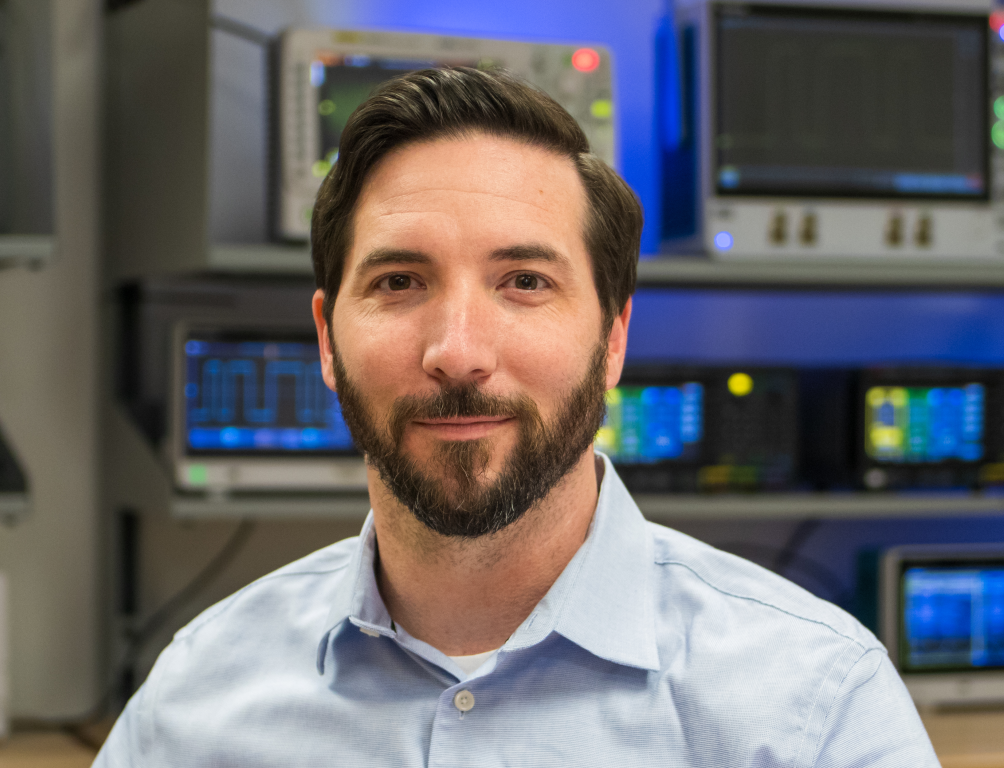Bouncing Ball Circuit
STUDENTS often contribute significant effort to gain intuition behind the Fourier Transform (and similarly Fourier Series). Recipies, smoothies, cakes, etc…

Assistant Professor
Teacher & Researcher
Electrical & Computer Engineering The University of Alabama in Huntsville
Curriculum VitaeSTUDENTS often contribute significant effort to gain intuition behind the Fourier Transform (and similarly Fourier Series). Recipies, smoothies, cakes, etc…
After enrolling in electronics courses, many students are still connecting dots and developing fluency regarding prereq STEM concepts. Below is an article that addresses common questions, strategies and conceptual connections that I hope will aid students in their study of electronics. The takeaway is to practice, ask questions, then practice some more. Don't get discouraged. In my experience, it always feels like I have to re-learn the most important topics many times....
STUDENTS often contribute significant effort to gain intuition behind the Fourier Transform (and similarly Fourier Series). Recipies, smoothies, cakes, etc… The mechanics of using integration to acheive the … Fourier transform derivation from a correlation perspective… A cross-correlation integral is defined as $$\begin{align} (f\star g)(\tau) &\triangleq \int_\infty^\infty \overline{f(t)}g(t+\tau)dt \newline &\triangleq \int_\infty^\infty \overline{f(t-\tau)}g(t)dt \end{align}$$ For discrete function, a cross-correlation sum is defined as $$\begin{align} (f\star g)[n] &\triangleq \sum_\infty^\infty \overline{f[m]}g[m+n] \newline &\triangleq \sum_\infty^\infty \overline{f[m-n]}g[m] \end{align}$$...
CONTROLLING capacitance mechanically usually involves varying an effective, shared area between conductive plates. Some of these designs take the form of relatively small footprints with small 1 Voltage controlled capacitors are useful for many applications. $$\begin{align} v_\text{out}&=-A v_\text{in} \end{align}$$ $$\begin{align} v_{ZM}&=I_T Z_M \end{align}$$ $$\begin{align} v_{ZM} &=v_\text{in}-v_\text{out} \newline &=v_\text{in}-(-A v_\text{in}) \newline &=v_\text{in}+A v_\text{in} \newline &=v_\text{in}(1+A) \newline &=V_T(1+A) \newline \end{align}$$ $$\begin{align} v_{ZM}=I_T Z_M &=V_T(1+A) \newline \end{align}$$ $$\begin{align} Z_\text{in}=\frac{V_T}{I_T}&=\frac{Z_M}{1+A}\newline \end{align}$$ $$\begin{align} Z_M&=\frac{1}{sC_M}\newline \end{align}$$...
After enrolling in electronics courses, many students are still connecting dots and developing fluency regarding prereq STEM concepts. Below is an article that addresses common questions, strategies and conceptual connections that I hope will aid students in their study of electronics. The takeaway is to practice, ask questions, then practice some more. Don't get discouraged. In my experience, it always feels like I need to re-learn the most important topics many times....